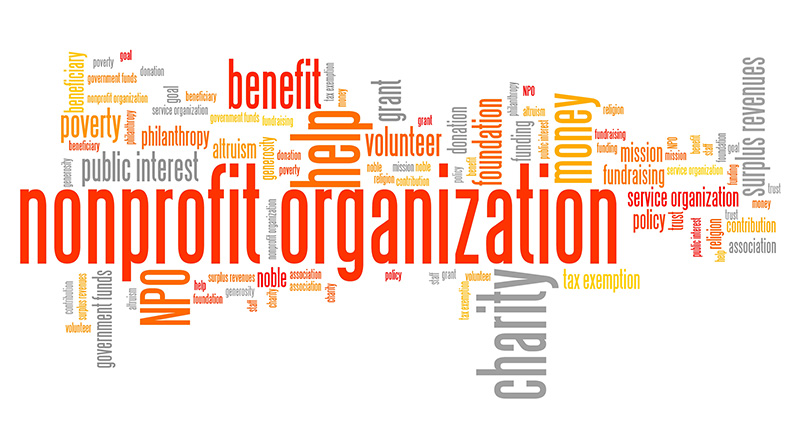Leading Nonprofit Agency: Offering Strategic Guidance for Mission-Driven Teams
Leading Nonprofit Agency: Offering Strategic Guidance for Mission-Driven Teams
Blog Article
Evaluating the Challenges and Opportunities Encountered by a Nonprofit Company in Achieving Its Goal and Objectives in Today's Society
In the current landscape, nonprofit agencies are browsing a complex selection of challenges, such as fluctuating financing sources and enhanced competitors for benefactor interaction. These troubles, while intimidating, can also open opportunities for technology and collaboration that might improve their ability to meet goals. By taking a look at how nonprofits can strategically adapt to these characteristics, we can uncover not only the methods they use to get over challenges yet also the untapped potential that lies within their operational frameworks. What remains to be seen is how these organizations will certainly harness these chances to redefine their influence in society.
Current Landscape for Nonprofits
The existing landscape for nonprofits is identified by a complex interplay of advancing financing versions, increased competition for benefactor attention, and increasing needs for accountability and transparency. Nonprofit companies are progressively diversifying their revenue streams to consist of gives, private donations, business sponsorships, and social venture initiatives. This change mirrors a strategic reaction to conventional financing sources becoming more unpredictable and affordable.
In addition, the increase of electronic interaction platforms has actually changed exactly how nonprofits involve with possible contributors. Social media, crowdfunding, and online campaigns are now necessary devices for getting to more comprehensive audiences, yet they additionally heighten competition amongst organizations trying restricted resources. In this environment, nonprofits have to improve their messaging to effectively record the rate of interest and commitment of fans.
In addition, stakeholders are requiring greater openness concerning just how funds are assigned and the quantifiable impact of nonprofit activities. This pattern demands that organizations embrace robust responsibility procedures, including detailed reporting and evaluation frameworks, to show their efficiency. Consequently, the nonprofit market is browsing a landscape that requires ingenious reasoning, calculated flexibility, and a dedication to ethical practices in order to flourish in the middle of these dynamic challenges and opportunities.
Secret Obstacles Run Into
Navigating the nonprofit market offers a myriad of obstacles that can prevent organizational efficiency and sustainability. Among one of the most pressing problems is the dependence on irregular financing resources. Nonprofits usually rely on grants, donations, and federal government assistance, which can vary considerably, bring about financial instability and difficulties in long-lasting planning.

Personnel retention and volunteer engagement posture additional difficulties, as lots of nonprofits battle to supply competitive incomes and advantages. The high turnover rates can disrupt organizational continuity and impact service delivery.
In addition, adjusting to technological innovations and digital makeover remains a difficulty for several nonprofits. An absence of resources and experience can stop companies from leveraging modern technology effectively, therefore restricting their outreach and efficiency.
Ultimately, these obstacles need nonprofits to employ tactical planning and ingenious approaches to preserve their mission and make certain sustainability in an intricate landscape. nonprofit agency.
Arising Opportunities
Exactly how can nonprofits harness emerging chances to improve their effect? In today's rapidly progressing landscape, nonprofits have the possibility to utilize technological advancements, shifting social dynamics, and increased public recognition to further their goals. The rise of electronic platforms enables organizations to broaden their reach, involving with diverse target markets and fostering area links. By utilizing social media sites and on the internet fundraising tools, nonprofits can raise presence and draw in younger benefactors who are extra inclined to sustain reasons they resonate with.
Additionally, partnership with companies and various other industries is coming to be more widespread, offering nonprofits with accessibility to sources, know-how, and cutting-edge solutions. Partnerships can enhance efforts, drive community interaction, and produce sustainable influences. Additionally, Homepage the growing focus on company social duty supplies nonprofits possibilities to line up with organizations that prioritize social effect, obtaining financial backing and shared goals.
The raising emphasis on data-driven decision-making allows nonprofits to better examine their results and programs, improving liability and efficiency. By accepting these arising opportunities, nonprofits can not just fortify their operational capabilities yet likewise broaden their impact in resolving pressing social problems, inevitably driving significant change in their neighborhoods.
Approaches for Adjustment
Adjusting to a regularly changing environment is important for nonprofits aiming to sustain their impact and effectiveness. To navigate the complexities of modern-day culture, nonprofits need to apply strategic methods that boost their strength and responsiveness.
One trick strategy includes leveraging innovation to enhance procedures and increase outreach. By using electronic systems, nonprofits can boost interaction with stakeholders, boost fundraising initiatives, and rise understanding of their mission. In addition, embracing data-driven decision-making practices allows organizations to evaluate their programs' effectiveness and readjust methods based on empirical proof.
Partnership with other companies-- both not-for-profit and for-profit-- can cultivate source sharing and technology. nonprofit agency. Collaborations can lead to common experience, funding chances, and expanded networks, inevitably enhancing the collective influence
Furthermore, growing a culture of flexibility within the company is essential. Educating team to embrace change and motivating creative problem-solving my link can empower teams to respond effectively to emerging obstacles.
Study and Success Stories
Effective adjustment techniques in the not-for-profit industry can frequently be highlighted with compelling study and success stories. One significant instance is the "Feeding America" network, which transformed its procedures throughout the COVID-19 pandemic. By leveraging technology and area partnerships, the company scaled its food distribution efforts to fulfill the extraordinary demand, serving millions of family members that dealt with food insecurity.
Another impactful case is the "Boys & Girls Clubs of America," which adjusted its programs to an online format throughout lockdowns. By presenting online mentorship and engaging activities, they kept connections with young people throughout the country, making sure ongoing support and advancement regardless of the obstacles presented by social distancing.
In a similar way, the "Globe Wildlife Fund" has successfully integrated community-based preservation methods, equipping neighborhood populaces to take part in wildlife defense efforts. This strategy not just promotes community ownership however additionally improves ecological sustainability.
These instance researches highlight just how nonprofits are not only dealing with immediate challenges but are additionally producing long-lasting solutions that align with their objectives. By sharing such success tales, companies can influence others to introduce and adapt, eventually driving positive adjustment within their areas.

Conclusion
Finally, nonprofit firms today navigate a complicated landscape identified by financial instability, competitors, and workforce challenges. Nevertheless, the possibility for development and innovation continues to be considerable. By accepting electronic outreach, promoting collaborations, and carrying out data-driven methods, these organizations can improve their functional efficiency and much better line up with community needs. Eventually, dealing with both opportunities and challenges will certainly be important for nonprofits to meet their missions and accomplish enduring impact in society.
In the present landscape, nonprofit companies are navigating a complicated selection of difficulties, such as rising and weblink fall funding resources and boosted competitors for benefactor involvement. The nonprofit industry is navigating a landscape that calls for ingenious reasoning, strategic adaptability, and a dedication to ethical practices in order to flourish amidst these vibrant obstacles and possibilities.
Navigating the nonprofit field presents a myriad of challenges that can prevent business effectiveness and sustainability.In conclusion, nonprofit firms today navigate a complex landscape defined by monetary instability, competitors, and labor force obstacles. Eventually, attending to both possibilities and obstacles will certainly be critical for nonprofits to satisfy their goals and achieve long-term effect in culture.
Report this page